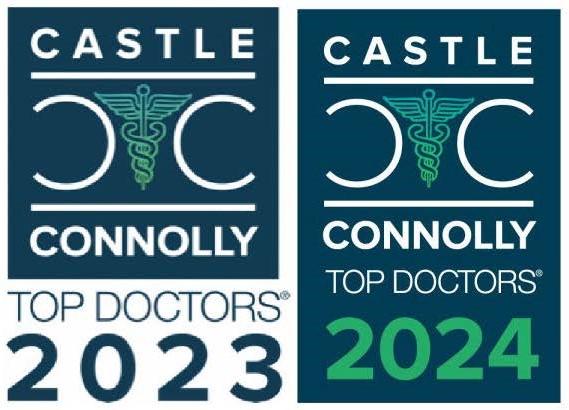
Sexual dysfunction in individuals with Obsessive-Compulsive Disorder (OCD) can really affect their quality of life. But it often goes unrecognized. OCD, characterized by persistent, intrusive thoughts (obsessions) and repetitive behaviors (compulsions) can interfere with various aspects of life, including sexual health.
Research shows that many people with OCD experience sexual dysfunction. Such as reduced libido and challenges with achieving orgasm. So, understanding this connection is important for providing effective treatment and enhancing the overall well-being of these patients.
What is Obsessive-Compulsive Disorder (OCD)?
Obsessive-Compulsive Disorder, or OCD, is a chronic mental health condition that can be incredibly debilitating. It involves relentless, intrusive thoughts that cause significant anxiety. To manage this anxiety, individuals engage in repetitive behaviors or mental rituals. This is called compulsions. Mainly these cycles of obsessions and compulsions can severely disrupt daily life. Making it difficult for those affected to function normally.
Understanding Obsessions and Compulsions
Obsessions are unwanted, intrusive thoughts, images, or urges that repeatedly enter a person’s mind, causing significant anxiety or distress. Common themes include fear of contamination, fear of harming oneself or others and unwanted sexual or aggressive thoughts.
Compulsions are repetitive behaviors or mental acts performed in response to an obsession or according to rigid rules. These behaviors are intended to reduce the anxiety associated with the obsessions or prevent a feared event or situation. Common compulsions include excessive washing, checking, counting and arranging.
Prevalence and Impact
OCD affects approximately 1-2% of the global population. The onset of OCD typically occurs in late adolescence or early adulthood. But it can develop at any age.
OCD doesn’t just affect the person dealing with it. It impacts their family, friends, and work life too. The constant need to engage in obsessions and compulsions can seriously disrupt daily routines, strain relationships, and lower the overall quality of life.
What Are Sexual Dysfunction and Sexual Satisfaction?
Sexual dysfunction is a range of issues that prevent an individual from experiencing satisfaction during sexual activity. These dysfunctions can occur at any stage of the sexual response cycle. Which includes desire, arousal, orgasm, and resolution.
Types of Sexual Dysfunction
- Desire Disorders: These disorders are characterized by a persistent or recurrent lack of interest in sexual activity. Many factors can influence this. Like hormonal imbalances, psychological conditions (such as depression or anxiety) and relationship issues. It can also be the side effects of certain medications. A study reported that approximately 15% of men and 30% of women experience low sexual desire at some point in their lives.
- Arousal Disorders: Arousal disorders is the inability to become physically aroused or excited during sexual activity. In women, this can manifest as a lack of vaginal lubrication. While in men it often presents as erectile dysfunction. Both psychological factors such as stress or performance anxiety, and physiological issues like cardiovascular problems or diabetes can cause these disorders. Experts in Massachusetts Male Aging Study stated that erectile dysfunction affects about 52% of men aged 40-70.
- Orgasm Disorders: These disorders involve difficulties with reaching orgasm or experiencing delayed or absent orgasms despite adequate sexual stimulation and arousal. This can be due to psychological factors. Like guilt or past trauma, as well as medical conditions including hormonal imbalances or neurological issues. Data indicates that about 24% of women and 5% to 10% of men report experiencing orgasm difficulties.
- Pain Disorders: Pain during intercourse, known as dyspareunia, or other forms of sexual activity is classified as a pain disorder. This can be caused by physical conditions such as infections, hormonal changes (particularly during menopause). Or conditions like endometriosis and pelvic inflammatory disease. Psychological factors, including fear of pain or negative sexual experiences, can also contribute. Studies indicate that up to 7% of women experience pain during sex. Highlighting the need for comprehensive medical and psychological evaluation.
Prevalence and Causes
Sexual dysfunction is a common issue It affects about 25% to 63% of women and 10% to 52% of men. The causes can vary. Involving physical, psychological, and relational factors. These may include chronic medical conditions, medications, mental health disorders (like OCD), relationship problems, and lifestyle factors.
Sexual Satisfaction
Sexual satisfaction is all about how fulfilled and pleased someone feels from their sexual experiences. It’s not just the physical aspect. It also involves emotional and relational elements. What makes someone feel satisfied can vary a lot, depending on their expectations, past experiences and also the quality of their sexual relationships.
Meanwhile, studies show that there’s a strong connection between sexual satisfaction and overall well-being. For example, research has found that people who are more sexually satisfied tend to have better mental and physical health.
Sexual Dysfunction in Individuals with Obsessive-Compulsive Disorder
Obsessive-Compulsive Disorder (OCD) influence on sexuality is a less explored topic that deserves attention. Undoubtedly, sexual dysfunction in individuals with OCD may significantly impact their quality of life. Yet it remains under-recognized and under-researched.
Sexual Dysfunction and Satisfaction in OCD
One early research in this field revealed that approximately 10% of female OCD patients experience anorgasmia. While 22% report problems during the sexual arousal phase. In contrast, 25% of male OCD patients have reduced sexual arousal, 12% struggle with premature ejaculation, and 6% face erectile dysfunction. Overall, 39% of these patients report sexual dissatisfaction.
Moreover, some more recent studies have highlighted the pervasive nature of sexual dysfunction in OCD. The researchers found that 53% of females with OCD experience sexual dysfunction. With orgasmic dysfunction being the most prevalent (20%) followed by issues with sexual desire (15%).
Another study reported that sexual dysfunction was present in 80% of women and 25% of men with OCD. Moreover, another research showed that sexual dysfunction is more prevalent in OCD patients (50%) compared to healthy controls (30%). These findings underscore the profound impact OCD can have on sexual health.
Insights from Self-Report Questionnaires
In a study with 350 female outpatients with OCD who completed self-report questionnaires, 101 responses showed a pattern of low sexual pleasure, high sexual disgust, and reduced sexual functioning. These sexual issues were found to be deeply connected to OCD itself. Rather than just the effects of medication or concerns about contamination.
Comparing OCD with Other Disorders
On top of that, comparative studies have revealed unique sexual dysfunctions in OCD patients compared to those with other mental health conditions. For instance, a study comparing OCD and Social Anxiety Disorder (SAD) patients using various sexual health inventories found that OCD patients reported more difficulties achieving orgasm, less frequent effective erections, and a higher incidence of past sexual abuse. These differences underscore the unique sexual health challenges faced by individuals with OCD.
Sexual Functioning in OCD vs. Panic Disorder (PD)
Additionally, research comparing OCD and Panic Disorder (PD) patients provides additional insights. In the study they involved 80 patients. With 40 diagnosed with OCD, 40 with PD, and 40 healthy controls, significant findings emerged. Male OCD patients had a lower age of first masturbation and first nocturnal ejaculation.
Also, sexual infrequency was more common among OCD patients. This affects 63.6% of women and 57.1% of men, compared to 36% and 38% in PD patients, respectively. Furthermore, sexual avoidance was prevalent in both female OCD (60.6%) and PD (64%) patients with anorgasmia detected in 24.2% of female OCD patients.
Contributing Factors to Sexual Dysfunction in OCD
Several factors may contribute to impaired sexual functioning and satisfaction in OCD patients:
- Self-Esteem and Body Image: OCD often coexists with low self-esteem and poor body image, which can further exacerbate sexual dysfunction. Individuals with OCD may feel ashamed or embarrassed about their symptoms, leading to reduced confidence in sexual situations and a diminished sense of sexual self-worth.
- Psychiatric Medications: Selective Serotonin Reuptake Inhibitors (SSRIs), commonly used to treat OCD, can delay ejaculation and female orgasm, decrease libido, and cause erectile difficulties. While these side effects are dose-dependent and generally reversible, high dosages often required for OCD treatment can lead to persistent issues. The incidence of SSRI-associated sexual dysfunction ranges from 30% to 50%.
- Physical Health and Behaviors: Poor physical health and unhealthy behaviors, often associated with OCD can also further impair sexual functioning.
- Relationship Stress: OCD can place a significant strain on relationships, leading to increased stress and reduced intimacy. The constant need for reassurance, avoidance behaviors, and the impact of compulsions can create emotional distance between partners negatively affecting sexual satisfaction.
- Symptom Content: The nature of OCD symptoms can directly impact sexual health. Obsessions related to contamination, sexual/religious/moral themes, and the fear of causing harm can create significant barriers to a healthy sexual life.
What Treatment Options Are Available for Obsessive-Compulsive Disorder (OCD)?
Treating OCD effectively may alleviate related sexual dysfunction, improving overall quality of life and intimate relationships.
- Cognitive-Behavioral Therapy (CBT): especially Exposure and Response Prevention (ERP), is one of the best approaches for treating OCD. This method involves slowly exposing patients to their fears while stopping them from carrying out their usual compulsions. Over time, this helps them manage their anxiety and reduce their OCD symptoms.
- Medication: Selective Serotonin Reuptake Inhibitors (SSRIs) are commonly used to treat OCD. These medications help balance brain chemicals, reducing the severity of obsessions and compulsions.
- Accelerated Transcranial Magnetic Stimulation (TMS) Therapy: Importantly, Accelerated TMS is a non-invasive treatment that uses magnetic fields to target specific areas of the brain. Made popular by Stanford University’s SAINT clinical study, this therapy involves an intensive schedule of 50 treatments over five days. Each day patients undergo ten 10-minute sessions with 50-minute breaks in between. The goal is to activate under-used neural pathways or calm overactive brain regions. Offering significant relief for OCD symptoms.
TMS Institute of Arizona: Pioneers in Accelerated TMS Therapy
The TMS Institute of Arizona became one of the first centers in the Southwest to offer Accelerated TMS Therapy. They use the MagVenture TMS device which was the same device used by Stanford in the SAINT study. This protocol received FDA approval in September 2022.
Since then, over 100 treatments have been administered, with over 75-85% of clients reporting at least a 50% improvement at the end of 5 days. And some achieving complete remission within 2-6 weeks post-treatment.
The TMS Institute of Arizona not only treats depression but also provides Accelerated TMS protocols for Generalized Anxiety Disorder, Panic Disorder, OCD, ADD/ADHD, brain optimization, insomnia and weight loss. Patients from across the United States and Canada have sought their expertise. This reflects their reputation for innovative and effective treatments.
If you or someone you know is struggling with OCD, the TMS Institute of Arizona can offer a path to significant relief and improved quality of life through their advanced Accelerated TMS Therapy. Contact us.
References:
Aksoy. (2019). Sexual dysfunction in obsessive compulsive disorder and panic disorder. Psychiatria Danubina, 24(4). https://pubmed.ncbi.nlm.nih.gov/23132189/
Arvind Kendurkar, & Kaur, B. (2008). Major Depressive Disorder, Obsessive-Compulsive Disorder, and Generalized Anxiety Disorder. The Primary Care Companion to the Journal of Clinical Psychiatry, 10(04), 299–305. https://doi.org/10.4088/pcc.v10n0405
Baxter, R. (2020). What Can Cause Orgasm Difficulties in Women? SMSNA. https://www.smsna.org/patients/did-you-know/what-can-cause-orgasm-difficulties-in-women
Feldman, H. A., Goldstein, I., Hatzichristou, D. G., Krane, R. J., & McKinlay, J. B. (1994). Impotence and Its Medical and Psychosocial Correlates: Results of the Massachusetts Male Aging Study. The Journal of Urology, 151(1), 54–61. https://doi.org/10.1016/s0022-5347(17)34871-1
Fontenelle, L. F., de, F., Gabriela, Mendlowicz, M. V., Miotto, R. R., Falcão, R., Marcio Versiani, & Figueira, I. L. (2007). Sexual Function and Dysfunction in Brazilian Patients With Obsessive-Compulsive Disorder and Social Anxiety Disorder. the Journal of Nervous and Mental Disease, 195(3), 254–257. https://doi.org/10.1097/01.nmd.0000243823.94086.6f
Habibollah Ghassemzadeh, Firoozeh Raisi, Reihaneh Firoozikhojastefar, Alipasha Meysamie, Narges Karamghadiri, Abbas Ali Nasehi, Fallah, J., Sorayani, M., & Narges Ebrahimkhani. (2016). A Study on Sexual Function in Obsessive-Compulsive Disorder (OCD) Patients With and Without Depressive Symptoms. Perspectives in Psychiatric Care, 53(3), 208–213. https://doi.org/10.1111/ppc.12160
Konstantinos Hatzimouratidis, & Dimitrios Hatzichristou. (2007). Sexual Dysfunctions: Classifications and Definitions. the Journal of Sexual Medicine, 4(1), 241–250. https://doi.org/10.1111/j.1743-6109.2007.00409.x
Laumann, E. O., Paik, A., & Rosen, R. C. (1999). Sexual Dysfunction in the United States. JAMA, 281(6), 537–537. https://doi.org/10.1001/jama.281.6.537
Mitchell, K., Geary, R., Graham, C., Datta, J., Wellings, K., Sonnenberg, P., Field, N., Nunns, D., Bancroft, J., Jones, K., Johnson, A., & Mercer, C. (2017). Painful sex (dyspareunia) in women: prevalence and associated factors in a British population probability survey. BJOG an International Journal of Obstetrics & Gynaecology, 124(11), 1689–1697. https://doi.org/10.1111/1471-0528.14518
N VULINK, DENYS, D., BUS, L., & WESTENBERG, H. (2006). Sexual pleasure in women with obsessive-compulsive disorder? Journal of Affective Disorders, 91(1), 19–25. https://doi.org/10.1016/j.jad.2005.12.006
Miguel, I., Sofia von Humboldt, & Leal, I. (2024). Sexual Well-Being Across the Lifespan: Is Sexual Satisfaction Related to Adjustment to Aging? Sexuality Research & Social Policy/Sexuality Research and Social Policy. https://doi.org/10.1007/s13178-024-00939-y
Monteiro, W. O., Noshirvani, H. F., Marks, I. M., & Lelliott, P. T. (1987). Anorgasmia from Clomipramine in Obsessive-Compulsive Disorder. British Journal of Psychiatry, 151(1), 107–112. https://doi.org/10.1192/bjp.151.1.107
Pozza, A., Veale, D., Marazziti, D., Delgadillo, J., Albert, U., Grassi, G., Prestia, D., & Dèttore, D. (2020). Sexual dysfunction and satisfaction in obsessive compulsive disorder: protocol for a systematic review and meta-analysis. Systematic Reviews, 9(1). https://doi.org/10.1186/s13643-019-1262-7
Rosen, R. C. (2000). Prevalence and risk factors of sexual dysfunction in men and women. Current Psycchiatry Reports/Current Psychiatry Reports, 2(3), 189–195. https://doi.org/10.1007/s11920-996-0006-2
Rowland, D. L., Padilla, S., Zsuzsanna Kӧvi, & Krisztina Hevesi. (2023). Self-reported reasons for having difficulty reaching orgasm in men with diverse etiologies. Sexual Medicine, 11(3). https://doi.org/10.1093/sexmed/qfad030
Singh, O. P., Ray, P., Mallick, A. K., Thakurta, R. G., Dhar, P., & Sarkar, S. (2021). Prevalence and Nature of Sexual Dysfunctions in OCD in a Tertiary Medical College. Eastern Journal of Psychiatry, 17(2), 20–30. https://doi.org/10.5005/ejp-17-2-20
Sasson. (2024). Epidemiology of obsessive-compulsive disorder: a world view. The Journal of Clinical Psychiatry, 58 Suppl 12. https://pubmed.ncbi.nlm.nih.gov/9393390/













